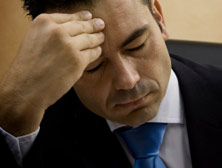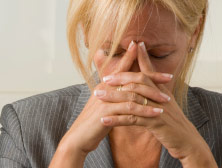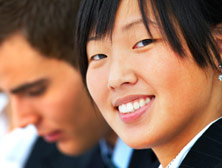MigraineHelper.com
 |
 |
 |
 |
|
They're Too Little to Suffer Like ThisIt isn't uncommon for little children to have headaches. Four out of five children experience them at times, usually as the result of a cold or flu. Tension headaches are common in young children who are living in stressful conditions or having a hard time relating with others or in school. Brain tumors can cause headaches, but not only are they rare, they have other accompanying effects including problems with coordination, balance, speech and sight, and walking. What Is A Migraine?
Migraine headaches are very intense, pounding headaches which affect either side of the head or both sides at the same time. Often nausea occurs with the headache which may begin with an aura (shadows, light flashes or spots which indicate the onset of a migraine), and then the pain intensifies. It can become worse with any movement and the child is virtually incapacitated. The headaches can last from several hours to several days. You Must Be Kidding!
The alarming statistic is that as many as 5 percent of children in grade school suffer with migraine headaches. During high school years the percentages increase to about 20 percent of adolescents getting migraines. More common in girls than in boys, it is not unusual for a child to experience two or three migraine headaches a week. Boys tend to get migraines more frequently when they are about 10 or 12 years old. The Role of Serotonin
Serotonin plays a significant part in the body and when the levels of serotonin in the body rise and fall; they can affect the swelling and constriction of blood vessels in the brain. When serotonin levels are high, blood vessels shrink and when they are low, blood vessels expand. It is the expansion and constriction of blood vessels in the brain that are thought to be a cause for migraine headaches. What Triggers a Migraine in a Child?
There are a variety of things which can trigger a migraine headache in a child. Unusual odors and bright lights, changes in the weather and being tired, stressed or depressed all have an effect. Missing meals, missing sleep, hormones (menstrual periods for older girls) and intense physical activity can set a headache in motion, as can allergies to different foods. It is also important to note that children who have suffered physical, emotional or sexual abuse are also much more likely to experience migraine headaches - usually very severely. Treatments
There are different ways to treat migraines in children, from drugs to behavioral therapy. Having the child lie down in a darkened room with a cool compress on their head can help relieve the symptoms. If the doctor has prescribed medication, it should be taken as soon as the migraine begins. The longer they wait the less effective the medication may be. Biofeedback and stress management techniques are of great value. An Ounce of Prevention
You can help your child to keep migraines at bay by ensuring they eat regular, well-balanced, nutritious meals and have adequate sleep. Regular exercise is an important tool to managing migraines. Find the triggers - they may be food related, activities that are too strenuous or they may be stress related - and do your best to eliminate them. Careful surveillance and employing sound methods can help the child immensely.
|
n |